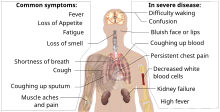Wikipedia:Graphics Lab/Illustration workshop/Archive/Jan 2021
  | This page, part of the Graphics Lab Wikiproject, is an archive of requests for 2021. Please do not edit the contents of this page. You can submit new requests here. |
Types of shirt neckline
{{resolved}}
- Article(s)
- Neckline
- Request
- The article for neckline is illustrated with a confusing assortment of photographs (close-ups, full-length portraits, group shots) that don't clearly depict different styles of neckline. Could someone please make a series of drawings for the styles listed in Neckline#List of neckline types? Here are non-free examples from dressmaking books: [1][2][3][4][5][6]. -- gnu57 19:39, 2 February 2021 (UTC)
- Discussion
Hi @Genericusername57:. Probably not the best, however here is an attempt to make the requested graphic. Tsange (Talk) 09:46, 9 February 2021 (UTC)
- Thank you, that's fantastic. It's just what I was looking for. I really do appreciate your taking the time to make this. Cheers, gnu57 19:10, 9 February 2021 (UTC)
- Hi @Tsange:, Could order the necklines alphabetically please? Auguel (talk) 23:07, 9 February 2021 (UTC)
- @Auguel: Thanks for spotting that. I have reordered the list. Tsange (Talk) 07:50, 10 February 2021 (UTC)
- Hi @Tsange:, Could order the necklines alphabetically please? Auguel (talk) 23:07, 9 February 2021 (UTC)
Request COVID-19 Symptoms cleanup

- Article(s)
- Symptoms of COVID-19 and many others as this is transcluded in many major articles
- Request
- See talk page discussion of the article for details. The symptoms and percentages shown are not supported by an appropriate source. Percentages must be removed or substituted with data from appropriate WP:MEDRS source such as [7]. Thanks! -- {{u|Gtoffoletto}} talk 18:51, 12 January 2021 (UTC)
- Discussion
Pictograms
- Article(s)
- w:pl:Ręce Boga and later translate to Hands of God or something
- Request
- I'm asking just for few pictograms from a vase. Articles about this on all Wikis are bad and English one was even removed, but I have finally good sources and I'm working on this. You can see these pictograms here (image) or here (film from a museum). The pictograms in the image are listed and I need pictograms a (man on horseback), c (woman on horseback), and e (deer). Having b would be nice too, but it is not necessary (it is unfinished or broken) and d exists as File:ReceBogaSwargi.svg. All I need are simple .svg with simple geometry, just like file mentioned before. -- Sławobóg (talk) 19:17, 15 January 2021 (UTC)
- Discussion
Punisher skull
- Article(s)
- Punisher, Blue Lives Matter
- Request
- Please draw a symmetric SVG of the punisher skull based on the source image. This (as opposed to the roundhead Charlotteville version) appears to be the more common version of "punisher" used in pro-police symbolism.-- Artoria2e5 🌉 19:43, 1 February 2021 (UTC)
- Discussion
- @Artoria2e5: How's that? Pbrks (talk) 02:46, 15 February 2021 (UTC)
SVG flag
-
SVG coa
-
GIF flag
-
New SVG flag
- Article(s)
- it:Laukiz
- Request
- Is there someone that can gently make svg of the flag using svg of the coa? Many thanks in advance!!! -- 2001:B07:6442:8903:D043:DBDE:8764:3DF2 (talk) 17:21, 13 January 2021 (UTC)
- Discussion
![]() Done --JMKTIN (talk) 19:59, 16 January 2021 (UTC)
Done --JMKTIN (talk) 19:59, 16 January 2021 (UTC)
Wanderers 3rd kit
Could someone please create the current Western Sydney Wanderers 3rd kit to put on the club and season page? This is it by the way [8]. WDM10 (talk) 05:51, 18 January 2021 (UTC)
FC Santa Claus
- Article(s)
- FC Santa Claus
- Request
- Can someone make the background transparent, as it was with the previous revisions please? The C of E God Save the Queen! (talk) 06:59, 24 December 2020 (UTC)
- Discussion
-
- @The C of E:
 Done Tsange (Talk) 08:35, 25 January 2021 (UTC)
Done Tsange (Talk) 08:35, 25 January 2021 (UTC)
- @The C of E:
Logo for Wikifunctions wiki
The upcoming Wikifunctions wiki needs a logo. Please help us to: discuss the overall goals of the logo, to propose design ideas and specific designs, and to give feedback on other designs - until 23 February. More details about design recommendations and ideas are on the talkpage. You can read an explanation about "functions" and the related Abstract Wikipedia initiative on the main project page. Thank you! Quiddity (WMF) (talk) 22:36, 27 January 2021 (UTC)
Abney effect
- Article(s)
- Abney effect
- Request
- The image should be changed so that each step of blending is done in linear RGB light; see Talk:Abney effect#Diagram. I am awful with image-generation tools like Pillow, so I am going to shamelessly let a more capable coder-illustrator take this. -- Artoria2e5 🌉 06:40, 19 February 2021 (UTC)
- Pinging original author LadyofHats per COM:OW. If you happen to still have the stuff you used to make the image around, friend... --Artoria2e5 🌉 06:57, 19 February 2021 (UTC)
- Discussion
Extended content
|
|---|
|
Artoria2e5 This is a difficult one to visualize. I have been looking around and there are not many images/animations to show this. I saw a couple I think are showing it [9], [10]. I really don't think using an animation adds a lot of value and it seems as RGB 0, 0, 255 is good to show this.
@Artoria2e5: This should probably be done using the HSL color model. This allows the use of arbitrary hues and the hue is maintained by design. See this example I generated [11]. If this makes sense to you I can create a visualization which looks like the one in the article. Or we can make some changes if they make sense (maybe removing the animation). Auguel (talk) 02:46, 25 February 2021 (UTC)
|
![]() Request taken by Goran tek-en (talk) 18:14, 26 February 2021 (UTC).
Okay, I went back and figured that we really can only have three examples from RGB as it's supposed to be monochromatic. Even then such a demonstration would only wekaly work in a LCD display with LED backlight or an OLED display because CRT is very not monochromatic in its emission, while LED at least only have one peak. (The fancy laser Rec. 2020 display would be actually perfect.) The blue example is expected to be most visible, the red second, and the green almost not at all, from the curved chromaticity diagrams I have seen. Goran tek-en, do your thing. --Artoria2e5 🌉 01:35, 26 February 2021 (UTC)
Request taken by Goran tek-en (talk) 18:14, 26 February 2021 (UTC).
Okay, I went back and figured that we really can only have three examples from RGB as it's supposed to be monochromatic. Even then such a demonstration would only wekaly work in a LCD display with LED backlight or an OLED display because CRT is very not monochromatic in its emission, while LED at least only have one peak. (The fancy laser Rec. 2020 display would be actually perfect.) The blue example is expected to be most visible, the red second, and the green almost not at all, from the curved chromaticity diagrams I have seen. Goran tek-en, do your thing. --Artoria2e5 🌉 01:35, 26 February 2021 (UTC)
- Artoria2e5 You will never have any sort of control on how someone will view this. So remember that what I will do is an illustration of the Abney effect, it is not the effect itself. --Goran tek-en (talk) 18:12, 26 February 2021 (UTC)
- Artoria2e5 Draft-2. --Goran tek-en (talk) 18:37, 26 February 2021 (UTC)
- Goran tek-en The colors are good. I mean, I can clearly see the effect for blue on my LCD screen in the 50-80% opacity range, which is as good as it can go. As for making it an illustration... I am not sure I get you. Do we intentionally vary the colors so people can feel it? (The text is a bit off because of the gamma issue. You can try
color-interpolation: linearRGBfor an actual opacity percentage in the light-mixing sense, but you are likely to see the scale being very washed out. Well, we aren't claiming it's in 10% steps, so it's not wrong. FWIW, the actual percentages are[0, 1.0022825574869039, 3.3104766570885054, 7.323895587840543, 13.286832155381797, 21.404114048223256, 31.854677812509184, 44.798841244188324, 60.38273388553378, 78.74122893956172, 100].) --Artoria2e5 🌉 03:53, 28 February 2021 (UTC)- Artoria2e5 This is the illustration. What I mean is that we can not perform the Abney effect in a real sense. What we do is show an illustration of the Abney effect. There is a big difference in that and that is why it doesn't have to be (it can't) as in theory, we visualize it so one can understand it.
- I picked the 10% steps just to have something as we don't show a continues 0-100.
- What do you mean by "the actual percentages are", what actual. Is that not up to what one chooses to show.
- Now I have two drafts for you; draft 10% steps. and draft your steps. Which do you want? --Goran tek-en (talk) 13:08, 28 February 2021 (UTC)
- Goran tek-en Just pick the 10% steps. You misunderstood the thing about the "actual percentages": I was saying the 10% opacities you pick in the code actually correspond to the weird values I gave in physical light blending, because gamma. Look up
color-interpolation: linearRGBif you are curious. --Artoria2e5 🌉 08:39, 2 March 2021 (UTC)
- Goran tek-en Just pick the 10% steps. You misunderstood the thing about the "actual percentages": I was saying the 10% opacities you pick in the code actually correspond to the weird values I gave in physical light blending, because gamma. Look up
- Artoria2e5 This is the illustration. What I mean is that we can not perform the Abney effect in a real sense. What we do is show an illustration of the Abney effect. There is a big difference in that and that is why it doesn't have to be (it can't) as in theory, we visualize it so one can understand it.
- Goran tek-en The colors are good. I mean, I can clearly see the effect for blue on my LCD screen in the 50-80% opacity range, which is as good as it can go. As for making it an illustration... I am not sure I get you. Do we intentionally vary the colors so people can feel it? (The text is a bit off because of the gamma issue. You can try
- Artoria2e5 Draft-2. --Goran tek-en (talk) 18:37, 26 February 2021 (UTC)
Artoria2e5 I will not upload this as a new version of the previous image, I want to upload it as a New image, so I will need the following;
- Name of the file
- Description (/language)
- Captions/s (/language)
- Category/ies at commons
to be able to upload it at commons. If you don'y know about Captions read here.--Goran tek-en (talk) 11:38, 2 March 2021 (UTC)
- Goran tek-en It is indeed impossible to overwrite the original image, especially since I've decided only the RGB primaries can show the effect nicely. Anyway, I recommend:
- File:Abney_effect_RGB.svg
{{en|An illustration of the {{w|Abney effect}}. The RGB primaries on a typical display is not monochromatic, making the effect weaker than the usual experimental setup. However, it is usually still possible to see the effect in the blue example. The mixing ratio step appears to be 10% in the {{w|gamma-corrected}} {{w|sRGB}} mixing system, but is in fact <code>[0, 1.0022825574869039, 3.3104766570885054, 7.323895587840543, 13.286832155381797, 21.404114048223256, 31.854677812509184, 44.798841244188324, 60.38273388553378, 78.74122893956172, 100]</code> in linear light. (A true 10% step would be appear too washed out.)}}{{en|An illustration of the {{w|Abney effect}}. The RGB primaries on a typical display is not monochromatic, making the effect weaker than the usual experimental setup. However, it is usually still possible to see the effect in the blue example.}}- Category:Color effects; Category:Color appearance models. --Artoria2e5 🌉 14:16, 2 March 2021 (UTC)
- Artoria2e5 There is no such article "gamma-corrected" as you linked to in the description. Now you can find it here Commons:file:Abney effect RGB.svg. If you are happy with this please put the code
{{tl|resolved|1=~~~~}}on this request so it can be archived, thanks. Done --Goran tek-en (talk) 14:34, 2 March 2021 (UTC)
Done --Goran tek-en (talk) 14:34, 2 March 2021 (UTC)
- Artoria2e5 There is no such article "gamma-corrected" as you linked to in the description. Now you can find it here Commons:file:Abney effect RGB.svg. If you are happy with this please put the code
{{resolved}}






